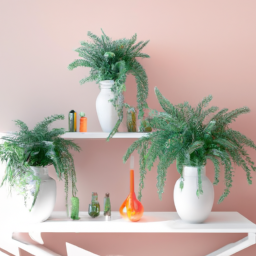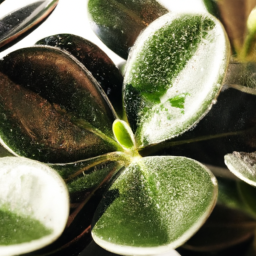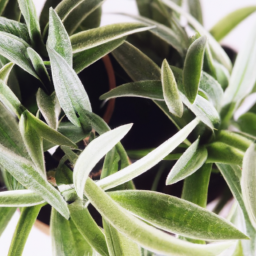
Have you ever wondered if indoor plants can actually purify the air in your home or office? Well, you’re not alone. Many people are curious about the potential benefits of having indoor plants when it comes to improving air quality. In this blog post, we will delve into the question, “Will indoor plants purify air?” and explore the scientific evidence behind this popular belief. So, if you’ve been contemplating adding some greenery to your indoor spaces, keep reading to discover whether these plants are truly capable of cleansing the air we breathe.
The Benefits of Indoor Plants in Air Purification
Indoor plants not only add a touch of greenery to your living space but also have the incredible ability to purify the air we breathe. These natural air purifiers have been scientifically proven to remove harmful toxins and improve overall air quality. In this article, we will delve into the fascinating world of indoor plants and explore how they can effectively purify the air in your home or office.
Understanding Air Pollution
Before we dive into the benefits of indoor plants, it’s important to understand the concept of air pollution. Air pollution refers to the presence of harmful substances in the air, such as pollutants, allergens, and volatile organic compounds (VOCs). These contaminants can have detrimental effects on our health, causing respiratory problems, allergies, and even more severe conditions.
Indoor air pollution is a significant concern as we spend a significant amount of time indoors, especially in our homes and workplaces. Common sources of indoor air pollution include building materials, cleaning products, furniture, and even everyday activities like cooking. This is where indoor plants come to the rescue!
How Indoor Plants Purify Air
Indoor plants have a unique ability to purify the air through a process known as phytoremediation. Phytoremediation is the process by which plants absorb and neutralize harmful pollutants present in the air and soil. They do this by taking in carbon dioxide through their leaves and roots and releasing oxygen as a byproduct of photosynthesis.
But it doesn’t stop there. Indoor plants also have the remarkable ability to remove toxins from the air. They absorb these toxins through tiny openings in their leaves called stomata. The toxins are then transported to the plant’s roots, where they are broken down by beneficial microorganisms in the soil. This natural purification process helps to create a healthier and cleaner indoor environment.
Furthermore, indoor plants can also reduce the levels of airborne dust and mold spores, which are common allergens. The leaves and stems of plants act as natural filters, trapping these particles and preventing them from circulating in the air. This can be particularly beneficial for individuals with respiratory conditions or allergies.
Choosing the Right Indoor Plants
Not all indoor plants are created equal when it comes to air purification. Some plants are more effective at removing specific pollutants, while others excel in overall air quality improvement. Here are a few indoor plants that are known for their air-purifying properties:
1. Snake Plant (Sansevieria trifasciata): This popular indoor plant is known for its ability to absorb toxins like formaldehyde, benzene, and xylene. It is easy to care for and can thrive in low-light conditions, making it an ideal choice for beginners.
2. Spider Plant (Chlorophytum comosum): Spider plants are excellent at removing formaldehyde and xylene from the air. They are also non-toxic to pets, making them a pet-friendly option for indoor air purification.
3. Peace Lily (Spathiphyllum): Peace lilies are not only visually appealing but also great at removing common indoor air pollutants like benzene, formaldehyde, and trichloroethylene. They prefer moderate to low light conditions and can thrive in humid environments.
4. Boston Fern (Nephrolepis exaltata): Boston ferns are highly effective at removing formaldehyde, xylene, and toluene from the air. They require bright indirect light and regular watering to thrive.
These are just a few examples of indoor plants that can help purify the air in your living space. It’s important to consider factors such as lighting conditions, maintenance requirements, and personal preferences when choosing the right indoor plants for your home or office.
Caring for Indoor Plants
Proper care and maintenance are crucial for indoor plants to thrive and effectively purify the air. Here are a few essential tips to ensure your indoor plants stay healthy:
1. Light: Most indoor plants require bright, indirect light to thrive. Place them near windows or provide artificial lighting if natural light is limited.
2. Watering: Avoid overwatering or underwatering your plants. The frequency of watering depends on the specific plant species, so it’s important to research the care requirements of each plant.
3. Humidity: Some indoor plants thrive in humid environments. You can increase humidity levels by misting the leaves with water or placing a tray of water near the plants.
4. Soil: Choose a well-draining potting mix specifically formulated for indoor plants. Avoid using garden soil, as it can be too heavy and may not provide adequate drainage.
5. Pruning: Regularly remove dead or yellowing leaves to promote healthy growth and prevent the spread of diseases.
6. Fertilization: Indoor plants generally require less fertilizer compared to outdoor plants. Use a balanced, water-soluble fertilizer and follow the instructions provided.
By following these care guidelines, you can ensure that your indoor plants remain vibrant and effective in purifying the air in your living space.
Conclusion
Indoor plants offer a natural and aesthetically pleasing solution to indoor air pollution. Their ability to absorb toxins, release oxygen, and filter dust and allergens makes them invaluable in creating a healthier and cleaner indoor environment. By choosing the right indoor plants and providing them with proper care, you can enjoy the numerous benefits of improved air quality and a greener living space. So go ahead, bring some greenery into your home or office and breathe in the fresh air!
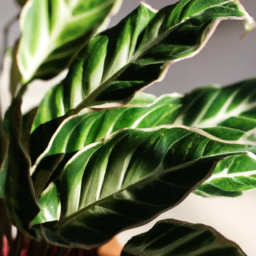
Choosing the Right Indoor Plants for Air Purification
Indoor plants have gained popularity not only for their aesthetic appeal but also for their potential to purify the air we breathe. With the increasing concerns about indoor air pollution, incorporating indoor plants into our living spaces can be a natural and effective way to improve air quality. However, not all plants are equally efficient at purifying the air. In this guide, we will explore the factors to consider when choosing indoor plants for air purification and provide you with a step-by-step process to help you make the right choice.
Understanding Air Purification Abilities
Before diving into the selection process, it’s important to understand how indoor plants purify the air. Plants have the remarkable ability to absorb gases through tiny openings on their leaves called stomata. They can absorb harmful pollutants such as formaldehyde, benzene, trichloroethylene, and xylene, which are commonly found in indoor environments due to various sources like furniture, cleaning products, and synthetic materials.
Once these pollutants are absorbed, the plants convert them into nutrients through a process called phytoremediation. The purified air is then released back into the environment, creating a healthier and more breathable space. However, it’s crucial to note that plants alone cannot completely eliminate all indoor air pollutants, especially in larger spaces or highly polluted environments. They should be seen as a complementary method to other air purification techniques.
Now, let’s move on to the step-by-step guide to choosing the right indoor plants for air purification.
Step 1: Assess Your Indoor Environment
The first step in selecting the right indoor plants for air purification is to assess your indoor environment. Consider factors such as the size of the room, the amount of natural light it receives, and the temperature and humidity levels. Different plants have varying light and temperature requirements, so it’s essential to choose plants that will thrive in your specific environment.
Additionally, identify the specific air pollutants you want to target. For example, if your indoor environment is prone to formaldehyde emissions from furniture or flooring, look for plants that are known to be effective in removing this particular pollutant. Understanding your specific needs will help you narrow down your options and make an informed decision.
Once you have assessed your indoor environment, it’s time to move on to the next step.
Step 2: Research Air-Purifying Plants
Now that you have a clear understanding of your indoor environment, it’s time to research air-purifying plants that are suitable for your specific needs. There are numerous indoor plants known for their air-purifying abilities, and each plant has its unique set of benefits.
Some popular air-purifying plants include:
1. Snake Plant (Sansevieria trifasciata): This plant is highly effective in removing formaldehyde and nitrogen oxide from the air. It thrives in low light conditions and requires minimal maintenance.
2. Spider Plant (Chlorophytum comosum): Spider plants are known for their ability to remove formaldehyde and xylene from the air. They are easy to grow and can tolerate a wide range of conditions.
3. Peace Lily (Spathiphyllum): Peace lilies are excellent at removing benzene, formaldehyde, and trichloroethylene. They prefer low to medium light levels and require regular watering.
4. Boston Fern (Nephrolepis exaltata): Boston ferns are effective in removing formaldehyde and xylene. They thrive in high humidity and indirect light.
These are just a few examples, and there are many more options available. Research each plant’s specific air-purifying abilities, care requirements, and suitability for your indoor environment.
Step 3: Consider Maintenance and Aesthetics
While the air-purifying abilities of indoor plants are essential, it’s also important to consider the maintenance requirements and aesthetics of the plants. Some plants may require more frequent watering or specific soil conditions, while others may be more forgiving in terms of care.
Additionally, think about how the plants will fit into your overall interior design. Choose plants that complement your existing decor and contribute to the overall ambiance of the space. Remember, indoor plants should not only purify the air but also enhance the visual appeal of your home or office.
By considering both the maintenance requirements and aesthetics, you can select indoor plants that will thrive in your environment and bring joy to your space.
Choosing the right indoor plants for air purification is a process that requires careful consideration of your indoor environment, research on air-purifying plants, and a balance between maintenance and aesthetics. By following these steps, you can create a healthier and more enjoyable indoor environment while enjoying the beauty and benefits of indoor plants.
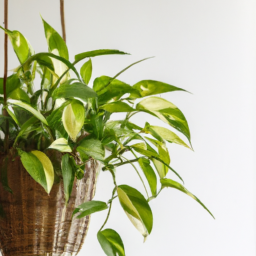
3. Tips for Maintaining Indoor Plants to Maximize Air Purification
Indoor plants not only add beauty and freshness to our living spaces but also have the remarkable ability to purify the air we breathe. They act as natural air filters, removing harmful toxins and pollutants from the environment. However, to ensure that your indoor plants are effectively purifying the air, it is essential to provide them with proper care and maintenance. In this article, we will explore some valuable tips to help you maximize the air purification benefits of your indoor plants.
Choosing the Right Indoor Plants
The first step in maintaining indoor plants for air purification is selecting the right species. Not all plants are equally efficient at removing pollutants, so it’s crucial to choose those that are known for their air-purifying properties. Some popular options include the Snake Plant, Peace Lily, Spider Plant, and Aloe Vera.
When selecting indoor plants, consider factors such as their ability to remove specific toxins, their growth habits, and their tolerance to indoor conditions. It’s also important to assess the lighting conditions in your space and choose plants that thrive in the available light.
Once you have chosen the appropriate indoor plants, it’s time to focus on their care and maintenance to ensure optimal air purification.
Providing Adequate Lighting
Light is an essential element for the growth and overall health of indoor plants. It is crucial to provide them with the right amount and intensity of light to maximize their air purification capabilities. Most indoor plants thrive in bright, indirect light, while some may require more or less light depending on their species.
Place your plants near windows or in areas where they can receive sufficient natural light. If natural light is limited, you can supplement it with artificial light sources such as fluorescent or LED grow lights. Remember to adjust the duration and intensity of artificial lighting based on the specific needs of your plants.
Regularly rotate your plants to ensure even exposure to light on all sides. This will prevent them from leaning or growing unevenly towards the light source.
Watering and Humidity
Proper watering is crucial for the health and vitality of indoor plants. Overwatering or underwatering can lead to various issues, including root rot or dehydration, which can negatively impact their air purification abilities.
Before watering, check the moisture level of the soil by inserting your finger about an inch deep. If it feels dry, it’s time to water the plant. However, if it feels moist, it’s better to wait a few more days before watering again.
Ensure that your plants are not sitting in standing water, as this can lead to root rot. Use pots with drainage holes and empty the excess water from the saucers after watering.
In addition to watering, maintaining proper humidity levels is also important for indoor plants. Some plants thrive in higher humidity, while others prefer drier conditions. You can increase humidity by placing a tray filled with water near the plants or by using a humidifier if necessary.
Fertilizing and Pruning
Indoor plants require regular fertilization to ensure healthy growth and optimal air purification. Choose a balanced, water-soluble fertilizer and follow the instructions provided by the manufacturer. Overfertilization can be harmful to plants, so it’s important not to exceed the recommended dosage.
Pruning is another essential aspect of maintaining indoor plants. Regularly remove any dead or yellowing leaves, as they can attract pests and hinder the plant’s ability to purify the air. Pruning also helps shape the plant and encourages new growth.
When pruning, use clean, sharp tools to avoid damaging the plant. Make clean cuts just above a leaf node or bud to promote healthy regrowth.
Lastly, regularly dust the leaves of your indoor plants to remove any accumulated dust or debris. This will help the plants breathe better and maximize their air purification potential.
By following these tips and providing proper care and maintenance, you can ensure that your indoor plants are effectively purifying the air in your living space. Enjoy the benefits of cleaner, fresher air and the beauty of thriving indoor plants!
Crisp Recap
Indoor plants have long been praised for their ability to add a touch of nature to our living spaces. But did you know that they may also have the power to purify the air we breathe? It’s a claim that has been circulating for years, but is there any truth to it?
According to numerous studies conducted by experts in the field, indoor plants do indeed have the potential to improve air quality. They have the ability to absorb certain harmful gases and release oxygen, creating a healthier environment for us to live in. This process, known as phytoremediation, is particularly effective in removing volatile organic compounds (VOCs), which can be found in common household products like paint and cleaning supplies. By placing a few carefully chosen plants in our homes or offices, we could potentially reduce the levels of these harmful substances in the air we breathe on a daily basis. However, it’s important to note that while indoor plants can certainly contribute to cleaner air, they are not a substitute for proper ventilation and other air purification methods.
FAQ Roundup:
Q1: Can indoor plants really purify the air?
A1: Absolutely! Indoor plants have been proven to be effective in purifying the air. They have the ability to remove harmful toxins and pollutants from the surrounding environment, making the air cleaner and healthier to breathe.
Q2: How do indoor plants purify the air?
A2: Indoor plants purify the air through a process called phytoremediation. They absorb pollutants such as formaldehyde, benzene, and trichloroethylene through their leaves and roots. These pollutants are then broken down and transformed into harmless byproducts, effectively purifying the air.
Q3: Which indoor plants are best for air purification?
A3: There are several indoor plants that are particularly effective at purifying the air. Some popular choices include the Snake Plant, Spider Plant, Peace Lily, Bamboo Palm, and Aloe Vera. These plants have been extensively studied and proven to have excellent air-purifying properties.
Q4: How many indoor plants do I need to purify the air in my home?
A4: The number of indoor plants you need depends on the size of your home and the level of air purification you desire. As a general guideline, it is recommended to have at least one medium-sized indoor plant per 100 square feet of living space. However, having more plants can further enhance the air purification process.
Q5: Are indoor plants beneficial for health besides air purification?
A5: Absolutely! Indoor plants offer numerous health benefits beyond air purification. They can help improve indoor humidity levels, reduce stress, boost mood, increase productivity, and even enhance cognitive function. Additionally, having plants indoors can create a calming and aesthetically pleasing environment, adding to the overall well-being of individuals.
Dr. Olivia Green is a botanist with over two decades of experience in indoor plant cultivation. She holds a Ph.D. in Plant Biology and has dedicated her career to researching plant behavior in controlled environments. Dr. Green is passionate about helping plant enthusiasts master the art of indoor gardening through her extensive knowledge and practical insights.

